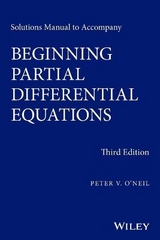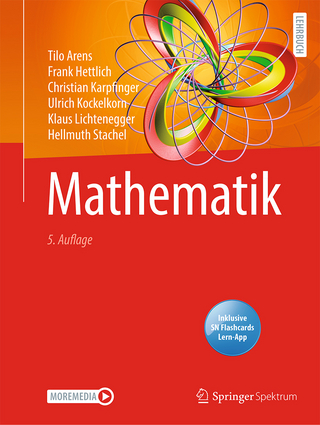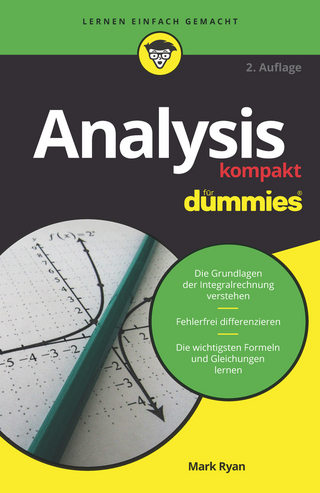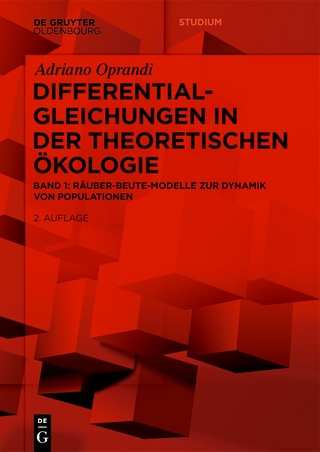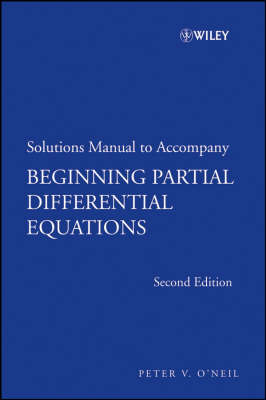
Beginning Partial Differential Equations
Solutions Manual
Seiten
2008
|
2nd Revised edition
Wiley-Blackwell (Verlag)
978-0-470-13389-7 (ISBN)
Wiley-Blackwell (Verlag)
978-0-470-13389-7 (ISBN)
- Titel ist leider vergriffen;
keine Neuauflage - Artikel merken
Zu diesem Artikel existiert eine Nachauflage
This book provides a challenging yet accessible introduction to partial differential equations for advanced undergraduate and beginning graduate students. It provides a solid introduction to the topic, particularly methods of solution based on characteristics and separation of variables, as well as Fourier series, integrals, and transforms.
A rigorous, yet accessible, introduction to partial differential equations-updated in a valuable new edition Beginning Partial Differential Equations, Second Edition provides a comprehensive introduction to partial differential equations (PDEs) with a special focus on the significance of characteristics, solutions by Fourier series, integrals and transforms, properties and physical interpretations of solutions, and a transition to the modern function space approach to PDEs. With its breadth of coverage, this new edition continues to present a broad introduction to the field, while also addressing more specialized topics and applications. Maintaining the hallmarks of the previous edition, the book begins with first-order linear and quasi-linear PDEs and the role of characteristics in the existence and uniqueness of solutions. Canonical forms are discussed for the linear second-order equation, along with the Cauchy problem, existence and uniqueness of solutions, and characteristics as carriers of discontinuities in solutions.
Fourier series, integrals, and transforms are followed by their rigorous application to wave and diffusion equations as well as to Dirichlet and Neumann problems. In addition, solutions are viewed through physical interpretations of PDEs. The book concludes with a transition to more advanced topics, including the proof of an existence theorem for the Dirichlet problem and an introduction to distributions. Additional features of the Second Edition include solutions by both general eigenfunction expansions and numerical methods. Explicit solutions of Burger's equation, the telegraph equation (with an asymptotic analysis of the solution), and Poisson's equation are provided. A historical sketch of the field of PDEs and an extensive section with solutions to selected problems are also included. Beginning Partial Differential Equations, Second Edition is an excellent book for advanced undergraduate- and beginning graduate-level courses in mathematics, science, and engineering.
A rigorous, yet accessible, introduction to partial differential equations-updated in a valuable new edition Beginning Partial Differential Equations, Second Edition provides a comprehensive introduction to partial differential equations (PDEs) with a special focus on the significance of characteristics, solutions by Fourier series, integrals and transforms, properties and physical interpretations of solutions, and a transition to the modern function space approach to PDEs. With its breadth of coverage, this new edition continues to present a broad introduction to the field, while also addressing more specialized topics and applications. Maintaining the hallmarks of the previous edition, the book begins with first-order linear and quasi-linear PDEs and the role of characteristics in the existence and uniqueness of solutions. Canonical forms are discussed for the linear second-order equation, along with the Cauchy problem, existence and uniqueness of solutions, and characteristics as carriers of discontinuities in solutions.
Fourier series, integrals, and transforms are followed by their rigorous application to wave and diffusion equations as well as to Dirichlet and Neumann problems. In addition, solutions are viewed through physical interpretations of PDEs. The book concludes with a transition to more advanced topics, including the proof of an existence theorem for the Dirichlet problem and an introduction to distributions. Additional features of the Second Edition include solutions by both general eigenfunction expansions and numerical methods. Explicit solutions of Burger's equation, the telegraph equation (with an asymptotic analysis of the solution), and Poisson's equation are provided. A historical sketch of the field of PDEs and an extensive section with solutions to selected problems are also included. Beginning Partial Differential Equations, Second Edition is an excellent book for advanced undergraduate- and beginning graduate-level courses in mathematics, science, and engineering.
| Erscheint lt. Verlag | 20.3.2008 |
|---|---|
| Reihe/Serie | Pure and Applied Mathematics: A Wiley Series of Texts, Monographs and Tracts |
| Verlagsort | Hoboken |
| Sprache | englisch |
| Maße | 162 x 230 mm |
| Gewicht | 334 g |
| Themenwelt | Mathematik / Informatik ► Mathematik ► Analysis |
| ISBN-10 | 0-470-13389-9 / 0470133899 |
| ISBN-13 | 978-0-470-13389-7 / 9780470133897 |
| Zustand | Neuware |
| Informationen gemäß Produktsicherheitsverordnung (GPSR) | |
| Haben Sie eine Frage zum Produkt? |
Mehr entdecken
aus dem Bereich
aus dem Bereich
Buch | Softcover (2024)
De Gruyter Oldenbourg (Verlag)
59,95 €
